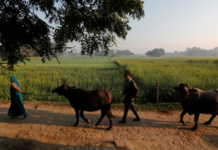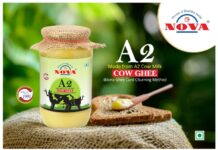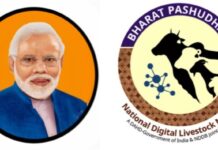By AAmarender Reddy, Principal Scientist, ICAR-Centre Research Institute for Dryland Agriculture, Hyderabad
Ramulu, a small farmers in Medak district of Telagana is having 3 acre of agricultural land, gets only Rs.60000 as net income in normal year. However, most of his daily expenses were met by the animal husbandry activities like rearing goats, chicken and dairy animals. Although he gets crop loan with subsidized interest rate from local bank, able to insure his crop through Prime Minister FasalBhimaYojana(PMFBY), able to purchase subsided fertilizer in nearest fertilizer dealer and sold his paddy harvest at MSP in the village, he is not getting any government support for his animal husbandry activities.
Although animals provide huge amount of food (milk, meat, eggs) rich in proteins, minerals, vitamins and micronutrients and provide nutritional security to vast population, it was grossly neglected in budget allocation, infrastructure development and special schemes since decades. Keeping this historical neglect,Modi government established new Ministry of Fisheries, Animal Husbandry and Dairying in year 2019 to handle all issues related to animal husbandry under one umbrella. Now it is now time to evolve programmes with special focus on animal husbandry.
Upsurge in demand
Animal husbandry sector in India during the past two decades grow on its own with little incentives from the government. India ranks first in milk production, accounting for about 20 per cent of total world milk production. There was steady and amazing rate of growth in milk production 84 million tons in 2001 to 176 million in 2019.Similarly egg production was also increased from 36.6 billion in 2001 to 100 billion in 2019. The meat production showed a good growth rate during the last two decades. According to the Department of Animal Husbandry, Dairying and Fisheries, the total meat production was only 1.9 million tons during 2001, which increased to 7.7 million tons during 2019. Even then, the availability of meat in India is only about 2.96 kg/person/year against the ICMR recommendation of 11.0 kg/person/year. Moreover, by 2050, with the growing population and enhanced purchasing power, the livestock sector should produce 186.2 million tons of milk, 18.7 million tons of meat and 306 billion eggs per annumas per ICMR. In addition there is huge potential for exports of Buffalo meat, Sheep/ Goat meat, Poultry products, Animal Casings, Milk and Milk products and Honey.

Low productivity, recurrent disease out breaks, shortage of feed and fodder, low value addition, high fluctuations in prices are some of the main problem of the sector. For example, despite being the highest milk producer in the world, the average milk production/animal/year is around 1,200 kg (50% of global average) in India, compared with New Zealand (3,343 kg), Australia (5,600 kg),UK (7,101 kg), USA (9,332 kg) and Israel (10,214 kg). Low value addition of milk and meat resulted in lot of wastage and also fetching lower prices internationally. For example, there is a huge potential to build premium brands of ultra-heat treatment (UHT) milk, cheese, probiotic dairy drinks, ice creams and spreads targeted to export markets.
Policy push
Livestock sector did not received the policy and financial attention it deserved in the past. The sector received only about 12 per cent of the total public expenditure on agriculture and allied sectors, which is disproportionately lesser than its contribution to agricultural GDP. The budget allocation to livestock sector must be more than 30 per cent of agriculture, matching to its contribution in agricultural GDP. The sector too has been neglected by the financial institutions. The share of livestock in the total agricultural credit has hardly ever exceeded 4 per cent in the total. Livestock extension has remained grossly neglected. Only about 5 per cent of the farm households in India access information on livestock technology. These indicate alethargic outreach of the financial and information delivery systems. Currently, only 6 per cent of the animal heads (excluding poultry) are provided insurance cover.The recent initiative of establishment of Animal Husbandry Infrastructure Development Fund worth Rs. 15,000 crore is a welcome move. In addition as scheme for interest subvention of up to 3% to private players for setting up of dairy, poultry and meat processing units was also initiated.This will also help increase milk production and export and will also generate employment for lakhs of people,” cabinet minister Prakash Javadekar said on Wednesday in the cabinet briefing.
Incentivizing production
Presently, different livestock species represent a big proportion of non-descript population, which as per the Breed Survey-2013 of the government, is 59, 43, 61 and 39 per cent in cattle, buffalo, goat, sheep, respectively. There is a need for replace them with high-quality (high milk and meat yielding) breeds in a time bound manner. The country processes less than 30% of milk production, and government is planning to increase processing to 60% by 2025. Another major problem is shortage of fodder and feed. The projected demand of dry fodder, green fodder and concentrates for 2020 is 468, 213 and 81 million tons on dry matter basis whereas the availability is estimated at 417, 138 and 44 million tons leaving a short fall of 11, 35 and 45 per cent, respectively as per the recent Report onPolicies and Action Plan for a Secure and Sustainable Agriculture.Currently, the area under fodder crops is just about 5% of cropped area, which needs to be increased to 10%. Again there is a need 100% vaccination of cattle, buffalo, sheep, goat and pig population (total 53 crore animals) for Foot and Mouth Disease (FMD) and for brucellosis. Till date, 1.5 crore cows & buffaloes tagged and vaccinated.
Incentives for market development
The marketing of milk and milk products and poultry and eggs are comparatively organized. But the market for live animals are mostly in unorganized sector.There are about 2,000 markets for live animals mostly managed by local bodies. Most of these markets are irregular, lack transparency in transactions and are short of basic infrastructure and marketing facilities. Development of livestock markets and also fodder markets in organized sector either by cooperatives or private sector will enhance infrastructure, technology levels and competition which ultimately benefit both farmers and consumers.
Overall, with new technology and market development coupled with enhanced budget and incentives, the livestock sector surely meet the growing demand.
Corporate Comm India (CCI Newswire)



















![Poolani Milk Cooperative Society [PMCS] well-established and fastest-growing in the Dairy Sectorof RuralKerala](http://thedairytimes.com/wp-content/uploads/2024/04/1-218x150.jpg)









![Poolani Milk Cooperative Society [PMCS] well-established and fastest-growing in the Dairy Sectorof RuralKerala](http://thedairytimes.com/wp-content/uploads/2024/04/1-100x70.jpg)